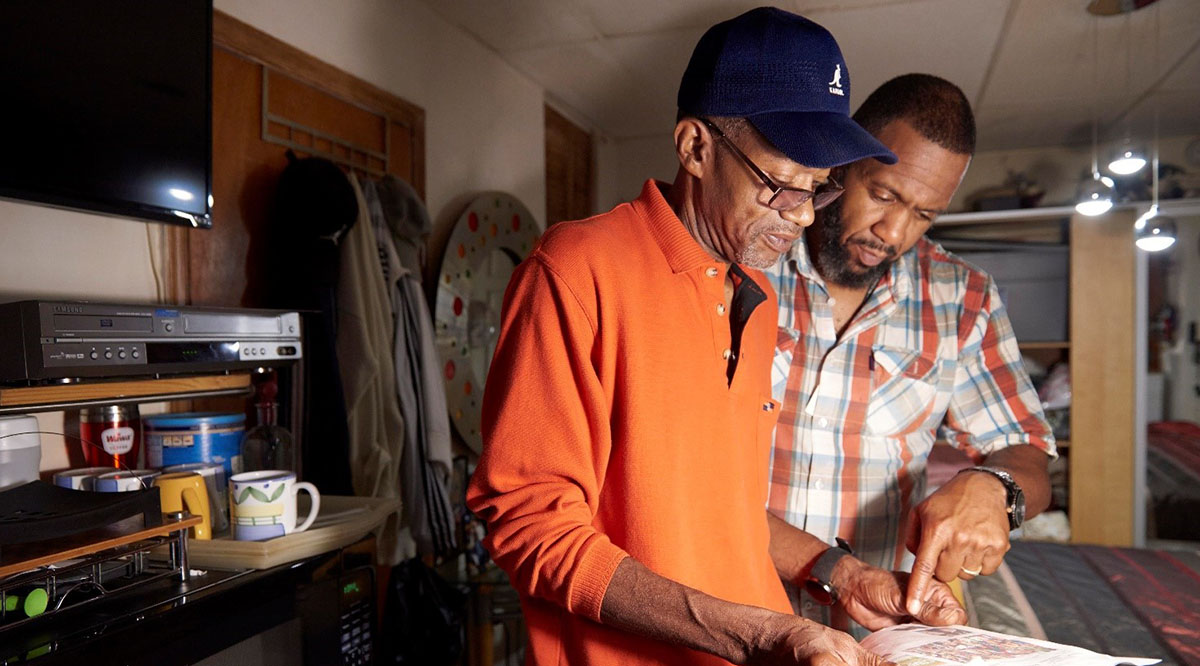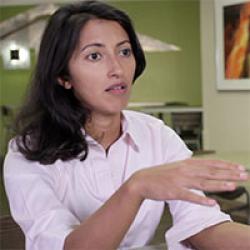
Editor’s note: The opinions expressed by the author do not necessarily reflect the opinions of the AAMC or its members.
Doctors, nurses, and paramedics have been rightfully celebrated as heroes in the COVID-19 pandemic. But there are other front-line health personnel who are virtually unknown to most Americans: community health workers (CHWs). These are trusted individuals who come from communities hardest hit by the pandemic and who provide a range of essential health services and social supports.
Brea Burke is a CHW in Tennessee who works with patients in a health system in Bristol, an area that recently experienced a huge spike in unemployment. She knows the community well — she was born and raised in the area — and loves helping people. Since the COVID-19 pandemic, Brea has been on overdrive — dropping off food on porches, arranging housing for people experiencing homelessness, collecting masks for soup kitchens, reinforcing COVID-19 prevention tips, and doing whatever it takes to get her community through this crisis.
One day last week, Brea got a panicked call from a patient who suffers from diabetes. Due to the pandemic, the woman had been unable to get an appointment with her provider and did not have a working glucometer to check her blood sugar levels. Without it, she couldn’t safely take her insulin, and her vision was beginning to blur because her blood sugar was high. Brea immediately made calls, found a monitor at a nearby hospital, drove to pick it up, and dropped it off on the patient's front porch. Then she sat in her driveway and watched while the patient took her insulin, keeping her out of the hospital and out of a dangerous health situation.
Brea may sound like a rare superhero, but she belongs to a bona fide workforce with an official Bureau of Labor Statistics classification and a body of scientific evidence behind it. Even before COVID-19, community organizations, health systems, and retailers like Walmart were hiring and deploying community health workers based on their ability to improve health and lower spending. By addressing the root causes of illness and averting costly hospitalizations, CHWs have been shown to save Medicaid $4,246 per beneficiary. If scaled to 15% of U.S. Medicaid beneficiaries, this would save taxpayers $47 billion annually.
Doctors, nurses, and paramedics have been rightfully celebrated as heroes in the COVID-19 pandemic. But there are other front-line health personnel who are virtually unknown to most Americans: community health workers.
Yet, currently there are only 59,000 community health workers in the United States. For comparison, we have 3 million registered nurses.
Why?
While other countries have invested in large-scale CHW programs, we have chosen a costlier and less effective “in-the-box” model of health care in which clinicians provide short bursts of medical care in ways that are often detached from the realities of people's daily lives. We have a tendency to myopically focus on the endgame, on treating the sickest patients in the hospital instead of directing resources to prevention and addressing chronic conditions where people live. As a result, even before COVID-19, the United States was famous for the inefficiency of its health care spending.
Now, COVID-19 has acted as a fun house mirror, amplifying the inefficiencies, shortcomings, and inequities of the U.S. health care system. Although providing quality health care is critical, addressing COVID-19 — and long-term public health — will require focusing more on upstream factors such as access to healthy food, steady jobs, and safe, clean housing.
If we are to survive this crisis, we will need to mobilize an army of upstream front-line workers: CHWs. They can prevent COVID-19 spread through efforts such as contact tracing and public health messaging. They can also attack upstream factors such as loss of income, deferred preventive and chronic disease care, stress, and social isolation that threaten to devastate communities at this unprecedented time.
We have a tendency to myopically focus on the endgame, treating the sickest patients in the hospital instead of directing resources to prevention and addressing chronic conditions where people live.
Teaching institutions can play an important role by hiring CHWs and integrating them into care teams. For instance, University Hospital in Newark, New Jersey — which has been disproportionately affected by COVID-19 — includes community health workers in interdisciplinary emergency department teams. CHWs get to know each patient as an individual, listen to life stories, and ask each person: “What do you think you need in order to improve your health?” Based on patients’ needs, preferences, and goals, CHWs provide tailored support. This might mean helping an undocumented man obtain identification papers, connecting a trauma survivor to counseling, or arranging dialysis transportation after a patient’s usual rideshare was suspended due to the pandemic.
In addition to being key parts of health care teams, CHWs can also lead and train team members. At the School of Medicine at the University of Pennsylvania, we have developed a CHW-led rotation in which medical students serve as apprentices to CHWs, shifting the power dynamic between traditional providers and community members. Students’ ability to see things from the perspectives of local residents is especially critical at a time when COVID-19 has exacerbated inequities in marginalized communities.
In California, at AltaMed — one of the country’s largest independent federally qualified health centers — family medicine residents work with CHWs who support patients, many of whom have been infected or otherwise affected by COVID-19. There, CHWs teach residents how to provide patient-centered care and provide such essential services as arranging prescription refills, coordinating food delivery, and advocating for patients with their landlords.
In addition to an increased commitment from teaching institutions and other health organizations to employ CHWs, the scale-up of this workforce will require policy and financing changes. Currently, most CHWs are paid through a patchwork of grants or insurer contracts and are reimbursed by Medicaid only for narrowly defined services or through limited demonstration projects.
Potential policy solutions include short-term funding for CHWs as part of emergency supplemental funding packages for COVID-19 response and longer-term funding through an optional benefit in Medicaid. Evidence-informed standards for CHW programs — such as those being developed by the National Committee on Quality Assurance — could help to ensure that federal funding supports high-quality programs.
CHWs get to know each patient as an individual, listen to life stories, and ask each person: “What do you think you need in order to improve your health?”
The combination of programmatic and policy action would bear quick fruit: CHWs can be hired, trained, and deployed within weeks to months. This would not only help stem a horrible public health crisis but also support economic recovery through job creation in communities most affected during this pandemic.
As we continue to battle COVID-19 in our health systems and communities, we need to rethink our strategy and tactics. If the front lines are limited to the nurses and doctors treating patients inside the hospital, we will have far higher casualty rates than necessary. The United States needs to quickly shore up a new front in this battle or risk losing even more victims in this devastating war.
